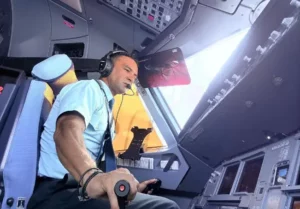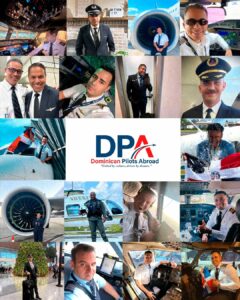Aviation is one of those industries where inspiration often begins in childhood. Most professionals in the sector can trace their earliest memories to playing with paper airplanes and dreaming of soaring through the clouds. As they grow older, those dreams transform into a desire to build a professional career in the aviation industry. It is at this stage that opportunities—or the lack thereof—play a crucial role in the decision to pursue an aeronautical career.
This is where society plays a fundamental role in creating these opportunities. As the well-known American saying goes, “It takes a village to raise a child.” Regardless of the financial resources available to a young person aspiring to a career in aviation, they will always need a helping hand to advance toward their dreams. More than in many other careers, aviation is deeply rooted in experience and the transfer of knowledge from one generation to the next.
In political discourse, we frequently hear promises of investment in education and the integration of underprivileged children into well-paying careers. However, often, these promises remain unfulfilled. At a time when national aviation is experiencing growth, it is crucial for us as a society to have an honest conversation about how we can integrate young people from all socioeconomic backgrounds into the new opportunities emerging in the national aviation sector.
National aviation is not just about counting how many tourists arrive in the country or how many foreign airline flights come and go. Rather, it should focus on strengthening national enterprises and institutions that participate in the Dominican civil aviation system. The industry thrives when investment is made in operational safety and when young people have access to resources, regardless of their social class.
We must take advantage of the vast opportunities currently available in Dominican aviation—new job openings for pilots of all levels, air traffic controllers, mechanics, dispatchers, airport administrators, and more. In this regard, we commend the efforts of the Dominican Institute of Civil Aviation (IDAC) and its new annual aviation job fair.
However, we need to expand these opportunities and include more young Dominicans. We must leverage the power of the state, private entrepreneurship, and the passion of nonprofit organizations to forge public-private partnerships aimed at helping our youth prepare for and achieve their goals in the aviation sector. Initiatives such as the creation of aviation-focused technical schools and high school programs, diversification of student loan options for pilot training, more job fairs, and, above all, the increased placement of aviation professionals in leadership roles within state institutions linked to the sector, are key.
It is essential for the state to encourage the establishment of new aviation businesses and offer tax incentives to the industry while simultaneously promoting the hiring of local personnel. This is why we have proposed the creation of a national development plan for civil aviation, integrating all levels of the educational system and the job market. Turning these opportunities into reality for our youth will ensure that their childhood dreams of paper airplanes evolve into the aviation professionals of tomorrow.





